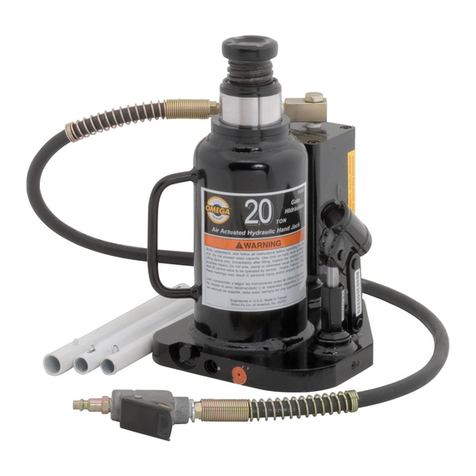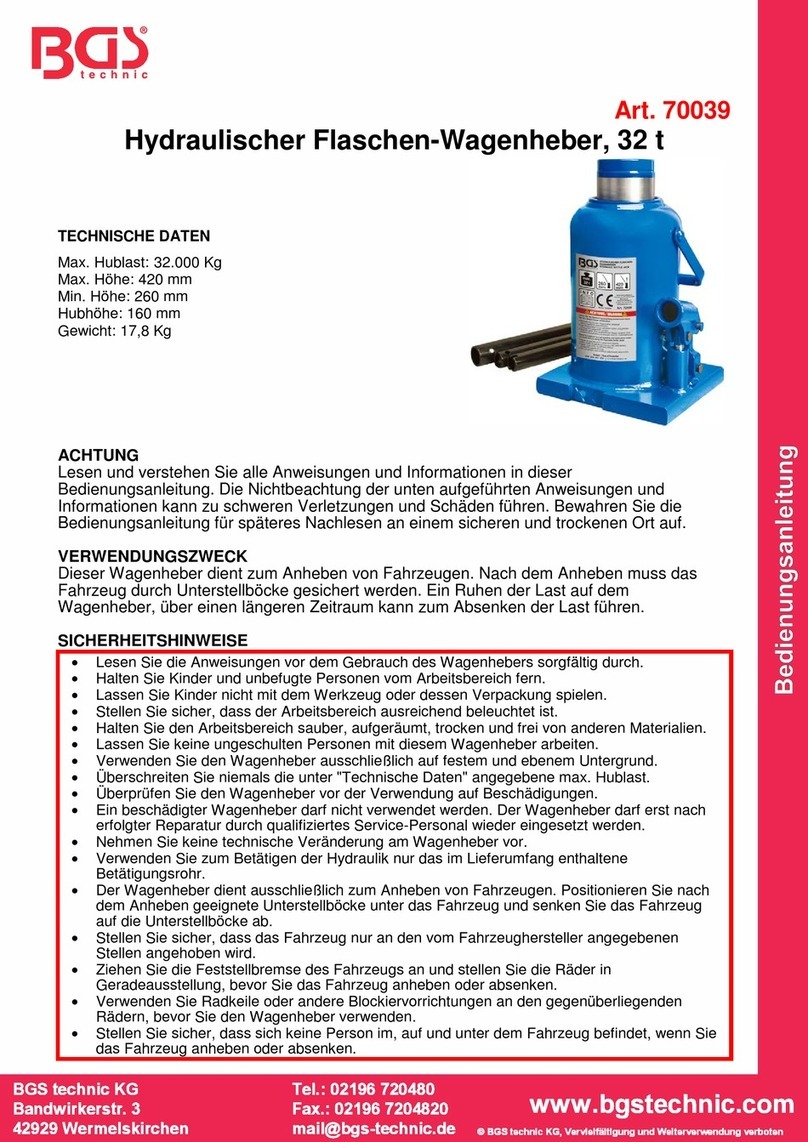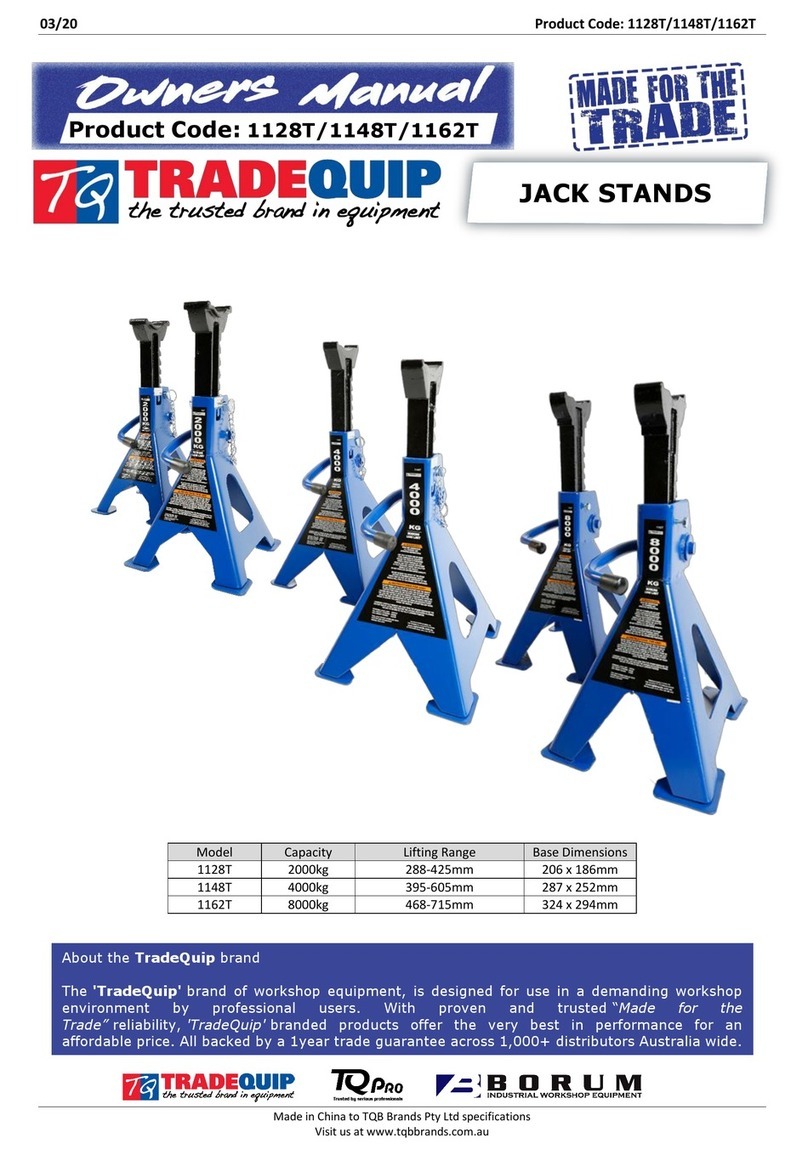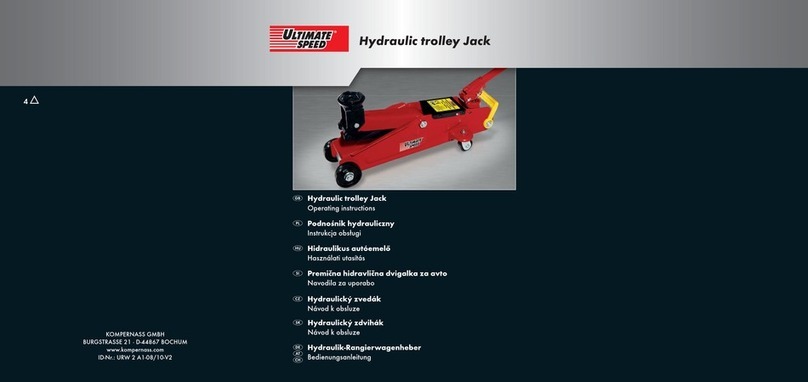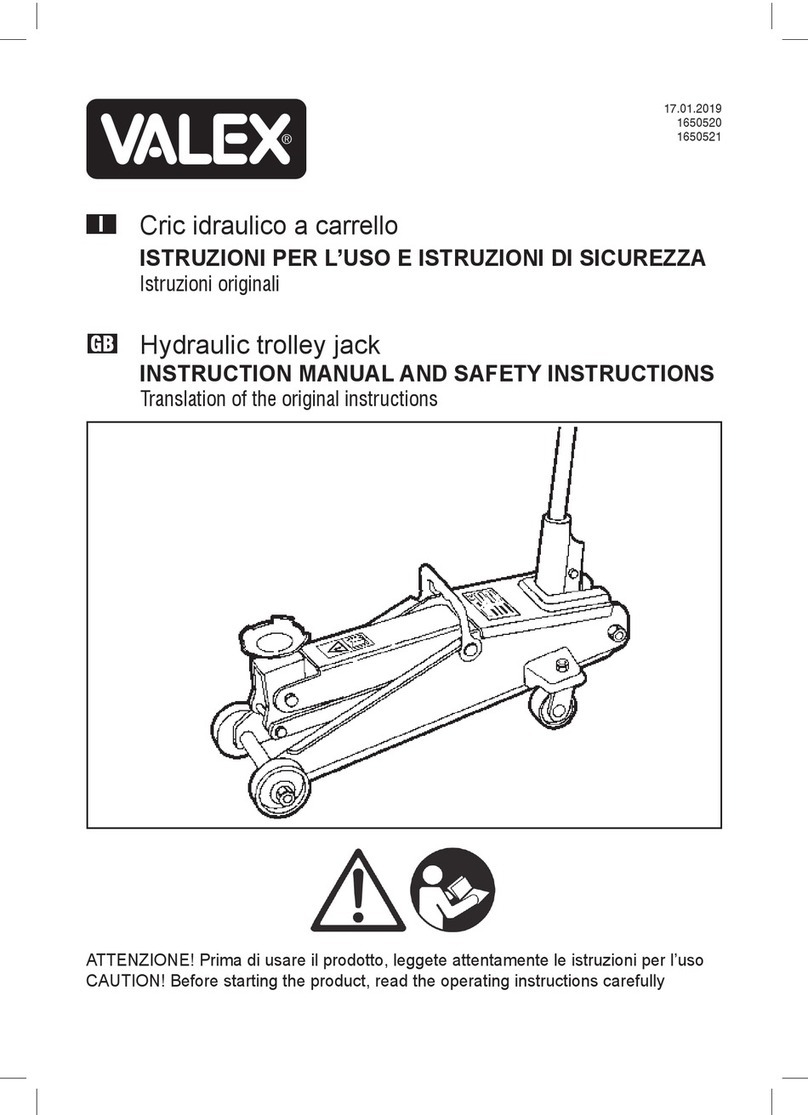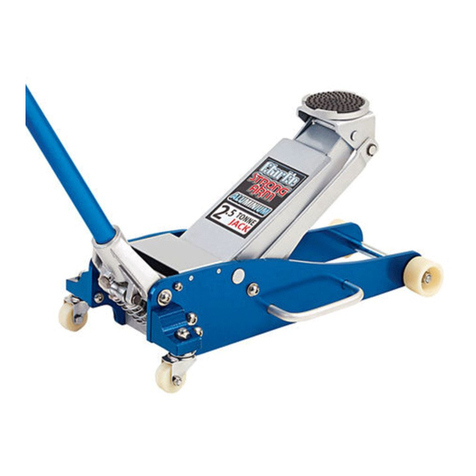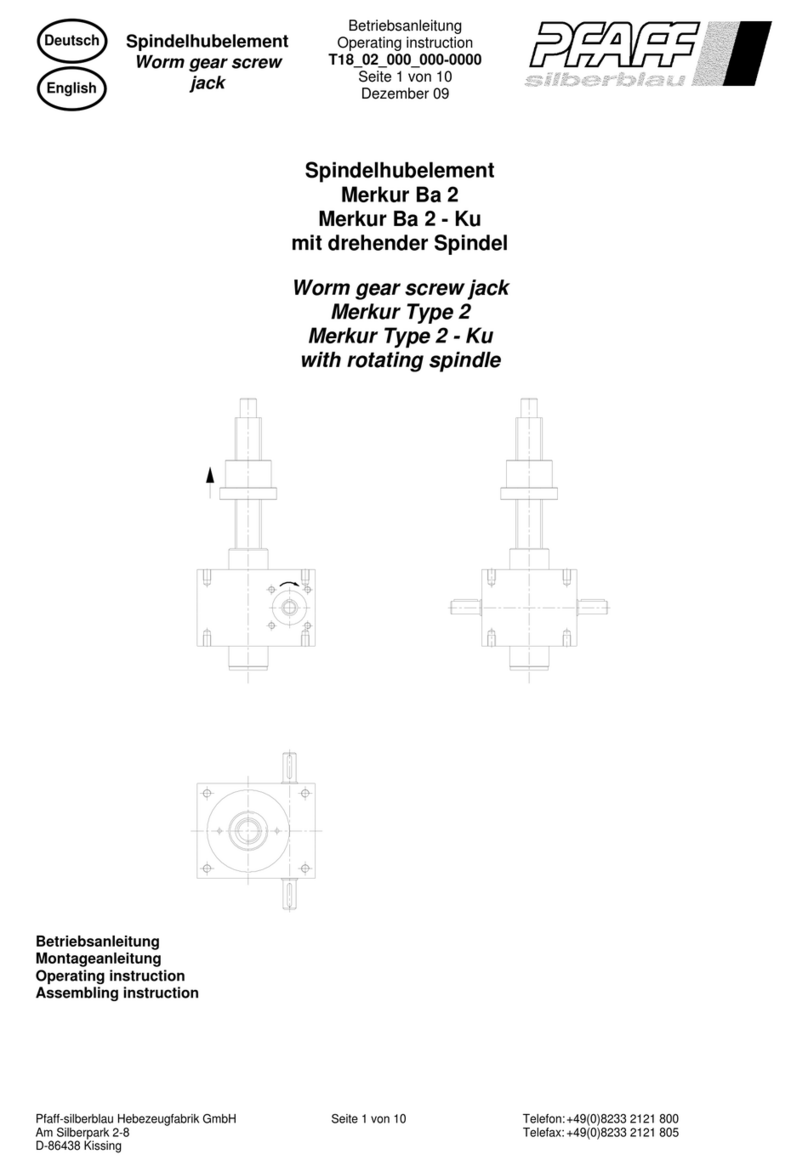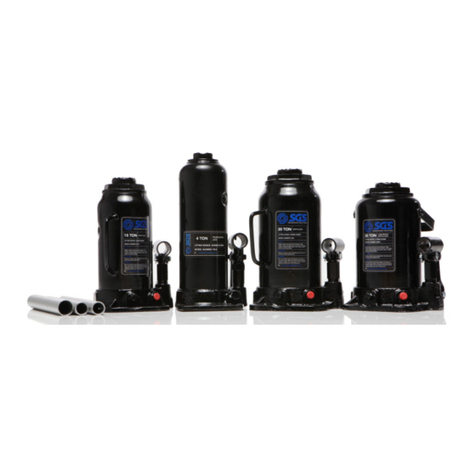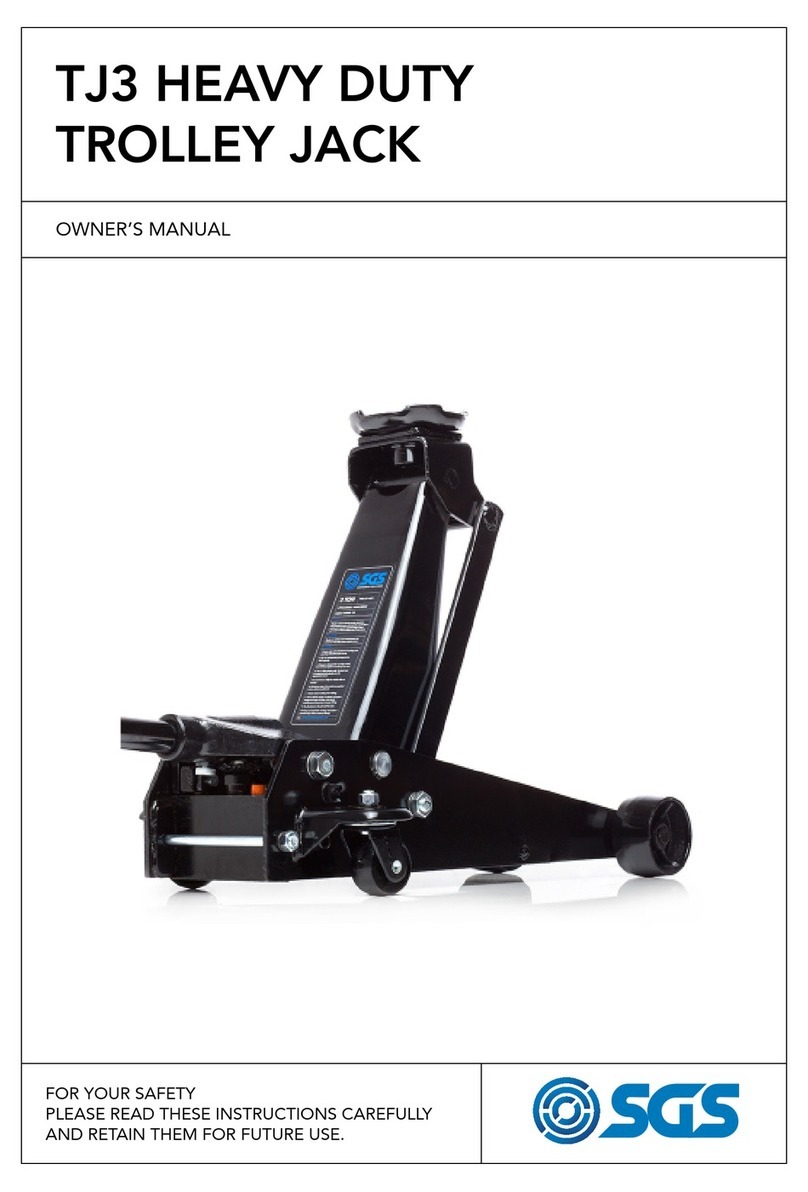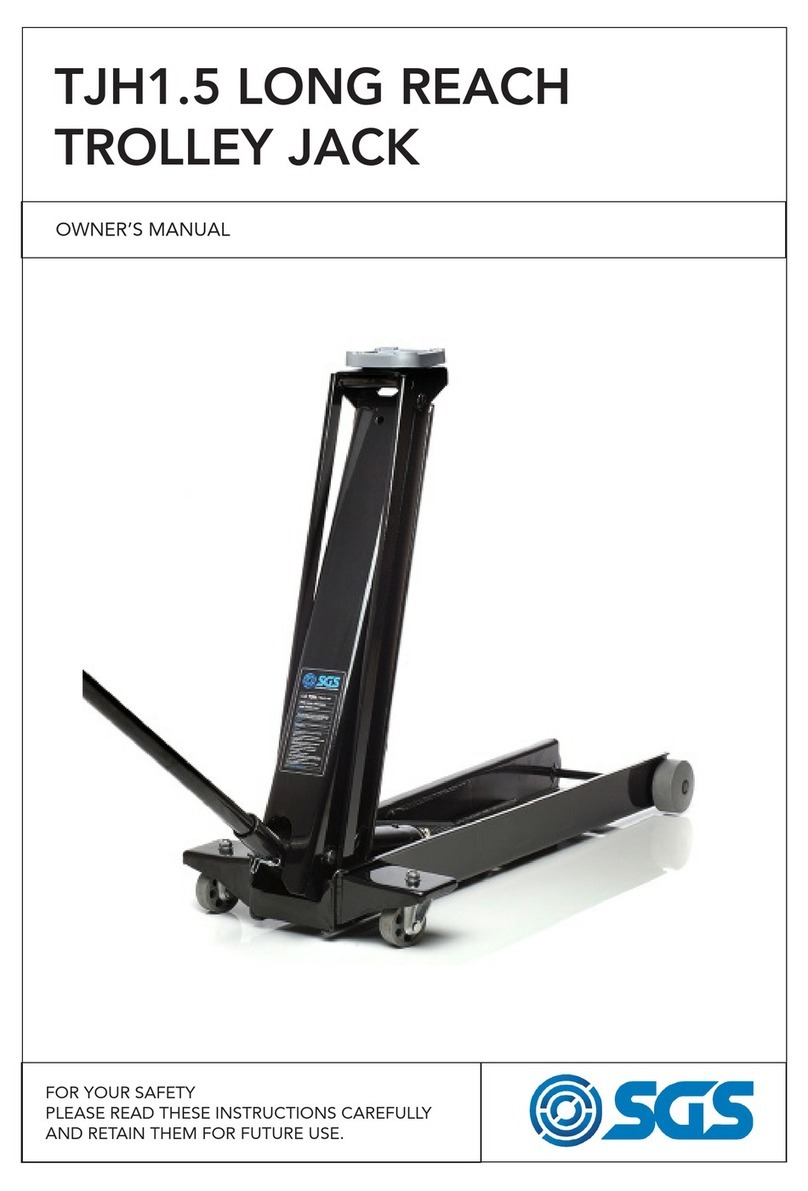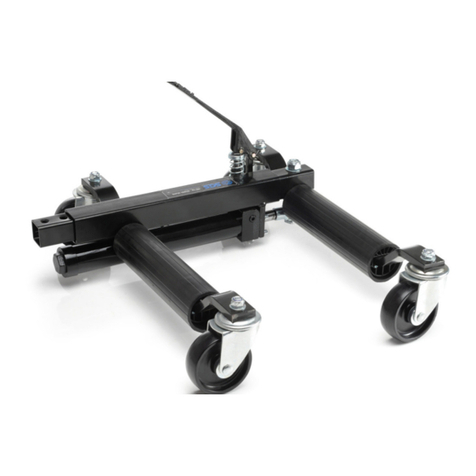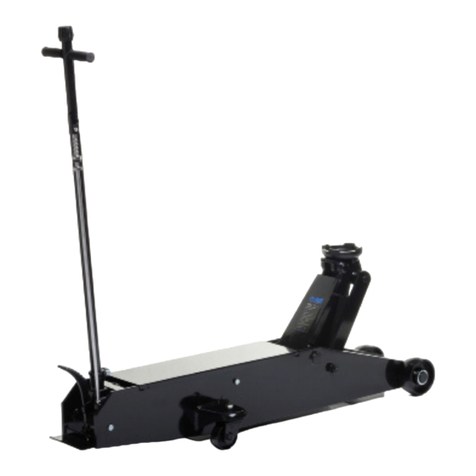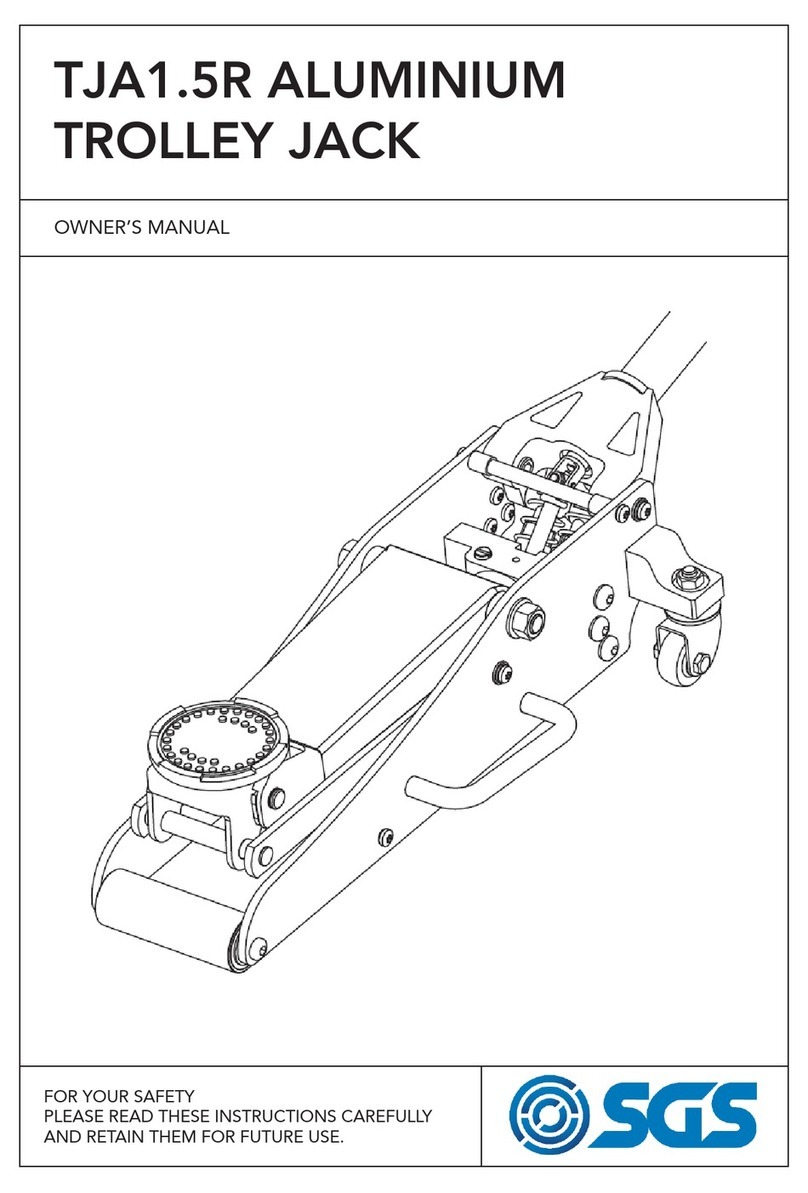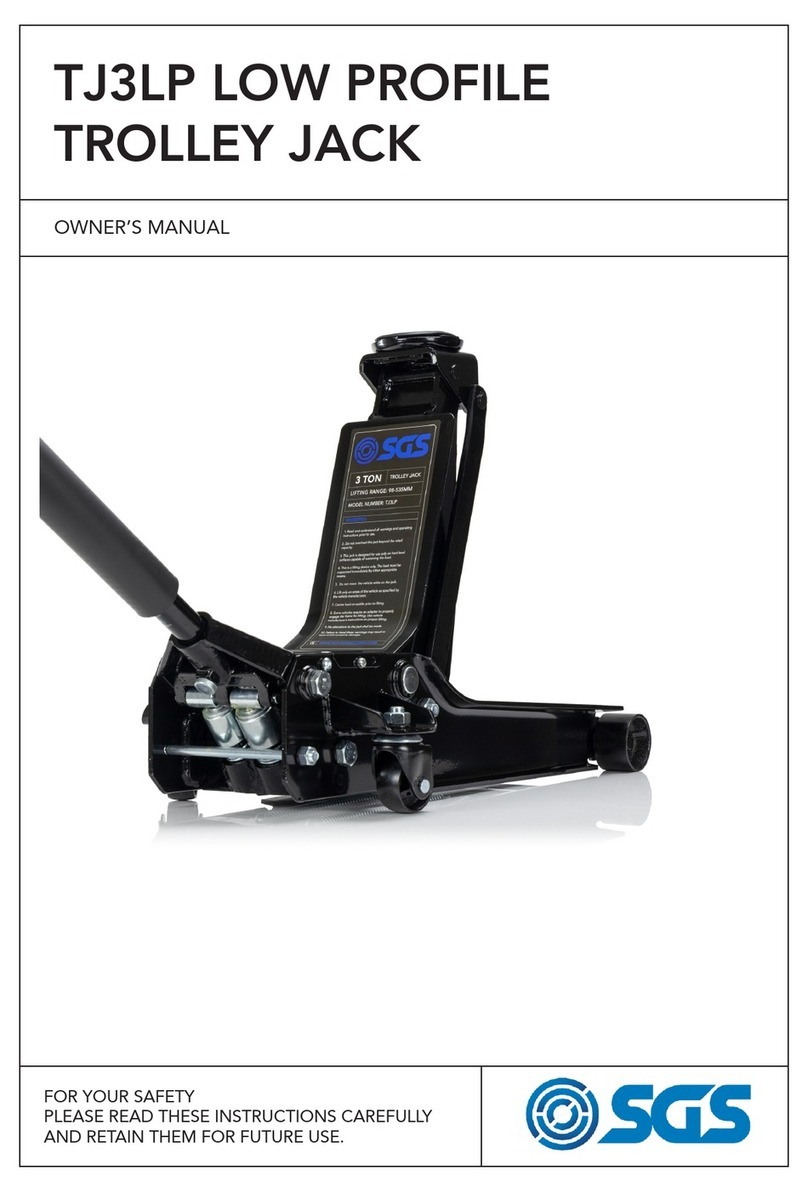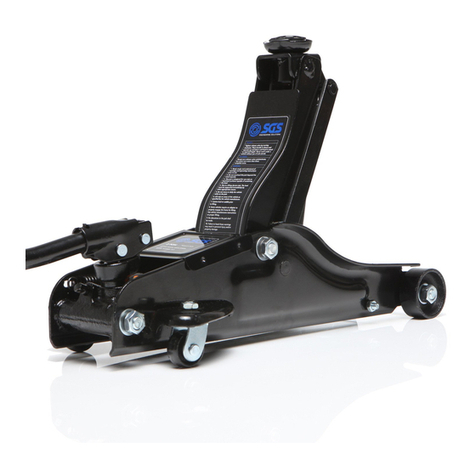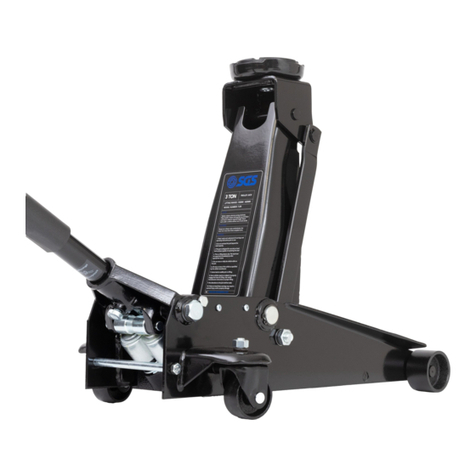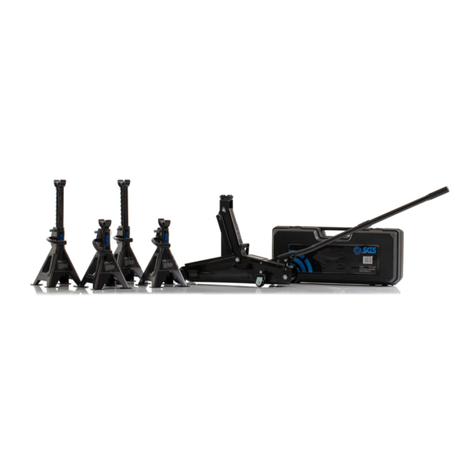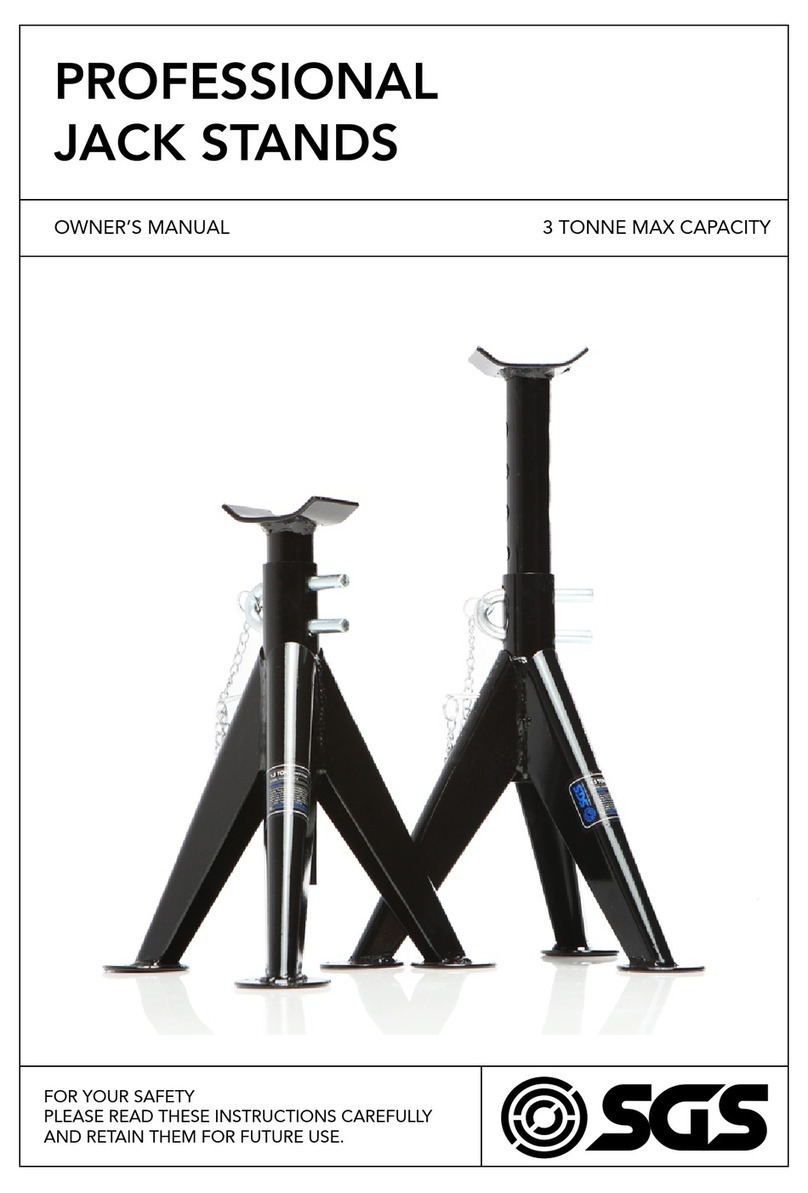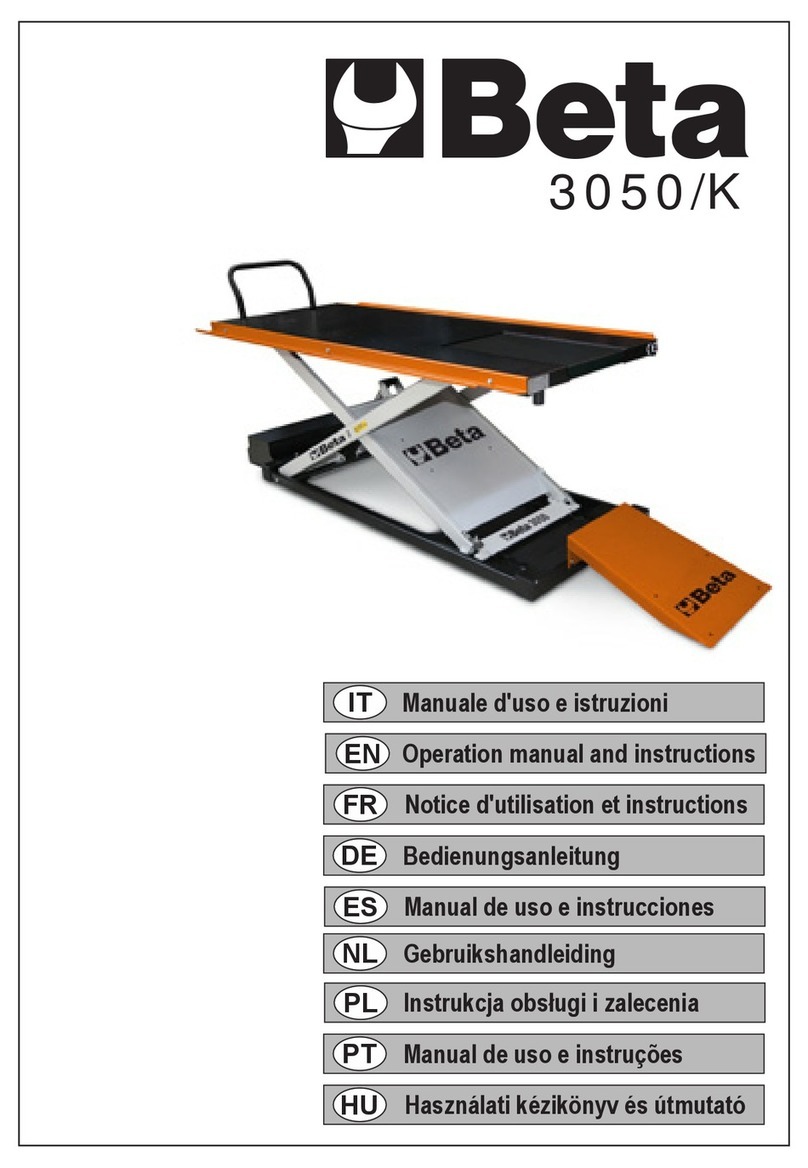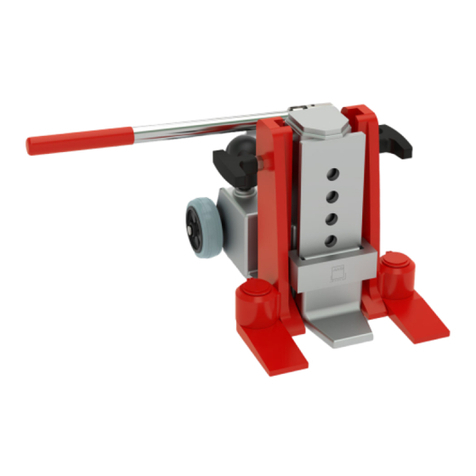
PAGE 9
PAGE 8
OPERATION
BEFORE USE
1. Make sure the jack and vehicle are on a hard level surface.
2. Always set the vehicle handbrake and chock the wheels.
3. Consult the vehicle owner’s manual to ascertain the location
of jacking points and position the jack beneath the lifting
point.
4. Place jack stands beneath the vehicle at locations recom-
mended by the vehicle manufacturer. Do not work under the
vehicle without the use of jack stands. Jacks are not designed
to maintain heavy loads for long periods of time.
5. Incorporate a filter, regulator with pressure gauge, oiler, in-line
shutoff valve, and quick coupler for best service. An in-line
shutoff ball valve is an important safety device because it con-
trols the air supply even if the air hose is ruptured. The shutoff
valve should be a ball valve because it can be closed quickly.
6. Note: If an automatic oiler system is not used, add a few
drops of Pneumatic Tool Oil to the airline connection before
operation. Add a few more drops after each hour of continual
use.
OPERATION
LIFTING
1. Install the handle assembly and turn the handwheel until snug.
2. Adjust the hand angle degree as needed to place the jack in
position under the load.
3. Adjust the extension screw as required. Turn counter clock-
wise to raise and clockwise to lower.
4. Connect the air supply hose lock fitting into the air fitting. The
lever should be off (not in the locked position)
6. Press the lever to the on position and lock using the lock lever.
This provides continuous air to the air motor.
7. Raise the jack by alternately lifting and lowering the handle
assembly.
LOWERING
1. Turn the handle knob clockwise to close the release valve.
2. Pump the handle to lift the vehicle off the jack stands.
3. Remove the jack stands. Do not get under the vehicle while
the vehicle is being lowered.
4. Turn the handle knob slowly counter clockwise to lower the
vehicle onto the ground.
WWW.SGS-ENGINEERING.COM
